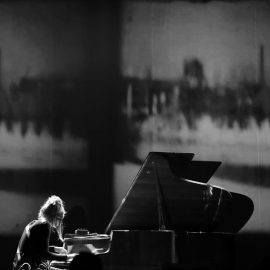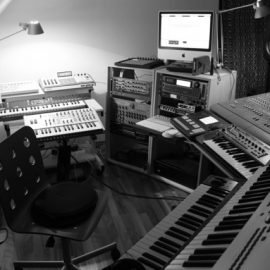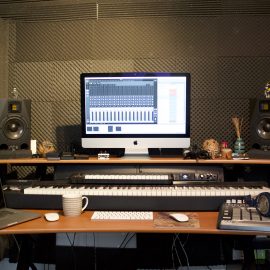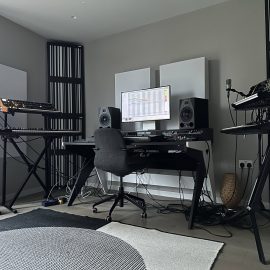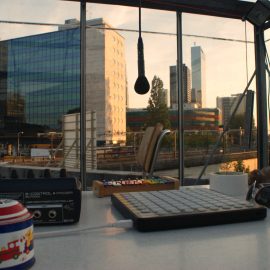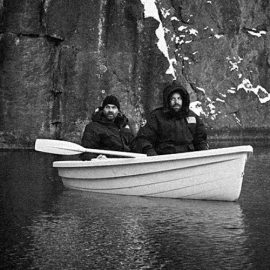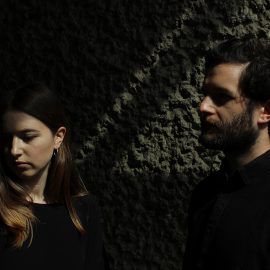Let’s start at the very beginning. Can you tell us how you got involved in composing, and what was your very first piece of gear?
My earliest experience of making recordings was when I was in bands in my early teens, and I would record our tracks on a Fostex 4-track cassette recorder. I was forever bouncing tracks down to free up more tracks for other instruments, as we were constrained by just 4 separate tracks.
How many different studio iterations have you gone through, and what does your final setup look like right now?
My studio is kind of an ongoing project. Lately, I’ve been mostly using it for mixing, as a lot of my recent recordings have been for strings and took place at churches or recording studios. At the moment, I have a UAD Apollo 8 which I use with my MacBook Pro and a selection of Neumann mics, some very old KRK V6 monitors and a lot of plugins.
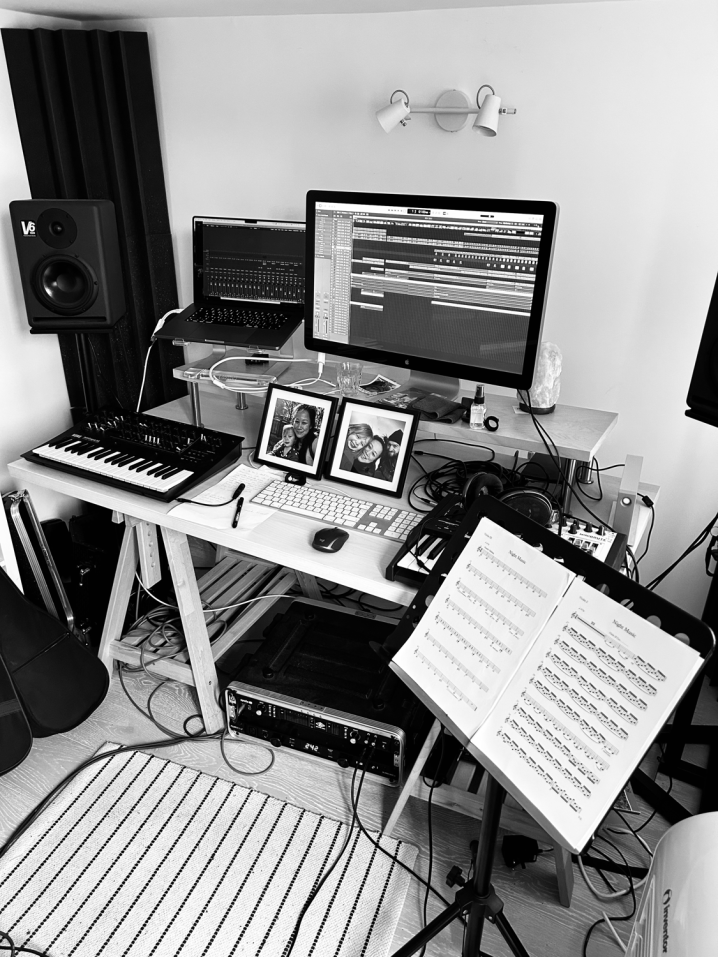
Tell us about your favourite piece of hardware.
I am a big fan of Neumann mics and do most of my recording with Neumann U87s or KM 184s, which I have set up to get a piano sound I’m really happy with in my home studio
And what about the software that you use for production?
I do most of my recording through Logic and a collection of plugins. The one feature that I really like is that you can manipulate the tempo so you can record to a click, but it doesn’t have to be rigid, and you can speed up and slow down or change the time signature, and the click can reflect this. When I record sessions either in studios or churches, I often create the click track as audio and then give it to the engineer (who generally uses Pro Tools) to record the stems, which they then send to me for the final mix. If I’m doing something live, I would generally use Ableton, but saying that, most of my recent live performances have been acoustic performances with no electronic elements.
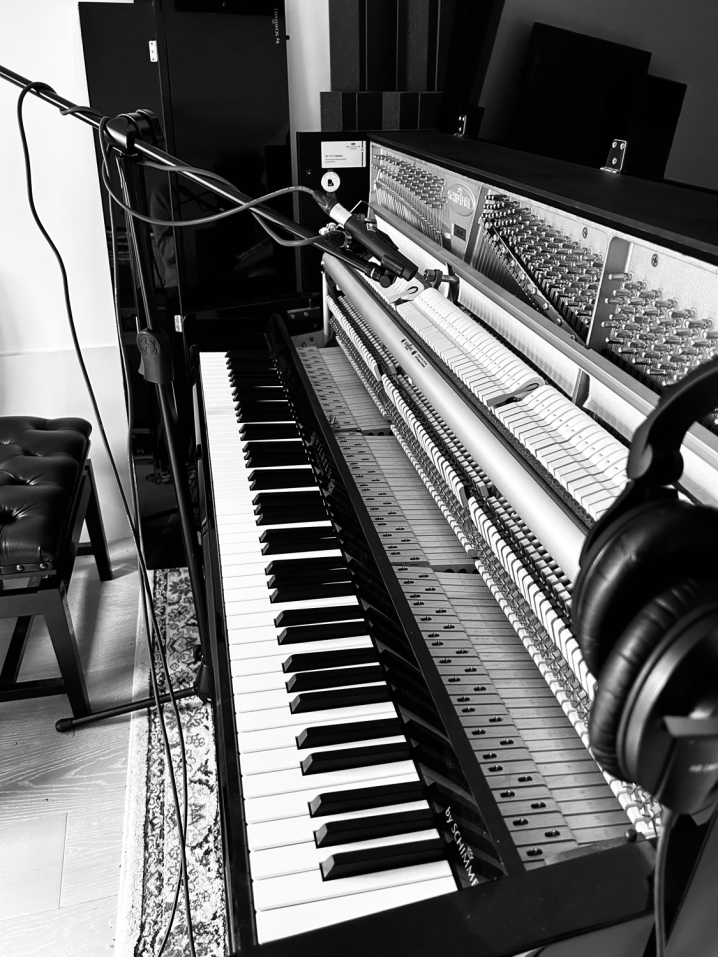
Is there a particular piece of gear that you’re just dying to get your hands on, and do you think one day you’ll have it?
I’ve wanted to get my hands on a Bricasti M7 for a while, as I mostly use reverb plug-ins at the moment. I think that will probably be my next studio purchase.
Can you please share some aspects of sound design in your work?
I generally use sound design and electronic elements to support or underpin the acoustic instruments – for example, underneath double bass, I almost always place a sinewave to reinforce low frequencies, or underneath string chords, I’ll add some warm pads. I also add some dirt and distortion via my Sound Toys plug-ins to string chords to give them a little edge. I guess the best examples of this are in my tracks “Cloud Memory” and “Tribute”.
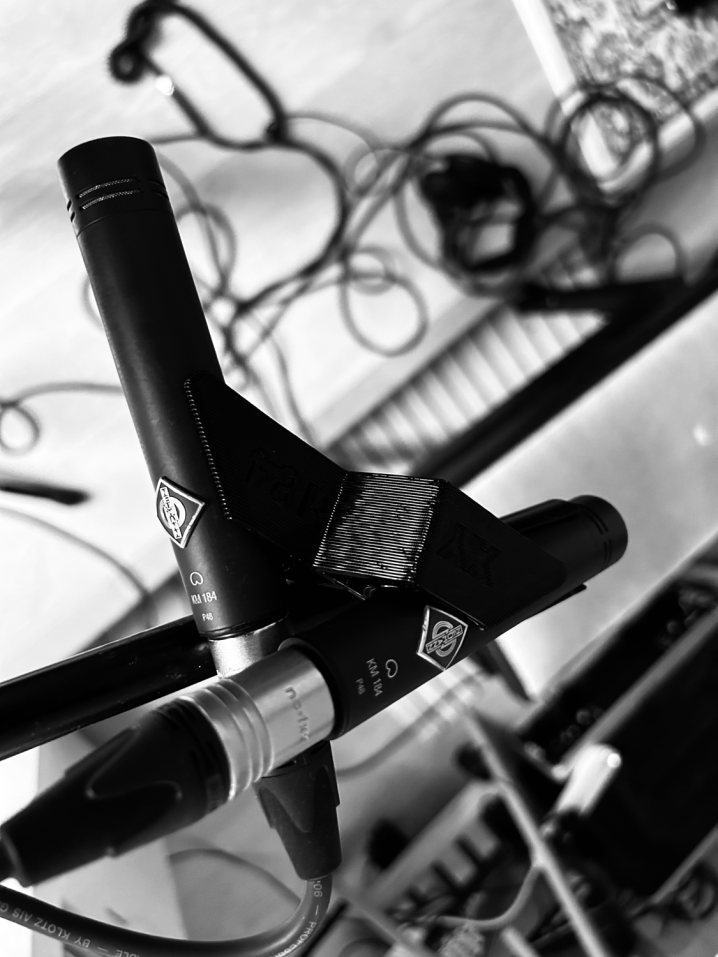
Any particular new techniques that you tried out for your new album?
There is a technique that I used in my upcoming album Imprints which I have been playing with a little bit. It uses piano pieces as a kind of template, around which a ghost image of the piano piece is rendered in ambient strings. “Imprints” introduces 4 instrumental piano pieces and simultaneously re-works them, breaking each piece down into individual notes and re-recording them using layers of ambient strings. The individual pitches are played 1 note at a time on double bass, cello, viola and violin. Each note is played at pianissimo and then increased to mezzo-forte when the note appears in the piano score. This creates an imprint or impression of the piano piece rendered in string layers. The effect is a ghostly/hazy image of the original piano piece as the melody emerges and then disappears. For each of the 4 pieces, there are 3 versions: a solo piano piece, an imprint rendered in strings, and a hybrid version that blends the piano part with the imprint. “Imprints” invites the listener to immerse themselves in the calm ambient waves of texture created through the intricately layered compositional process.
What does your live setup look like, and what do you bring with you when you travel for an extensive tour?
I don’t play live very often these days, so when my music is performed, it’s mostly by an ensemble playing pieces that I have scored, and more often than not these are acoustic performances.
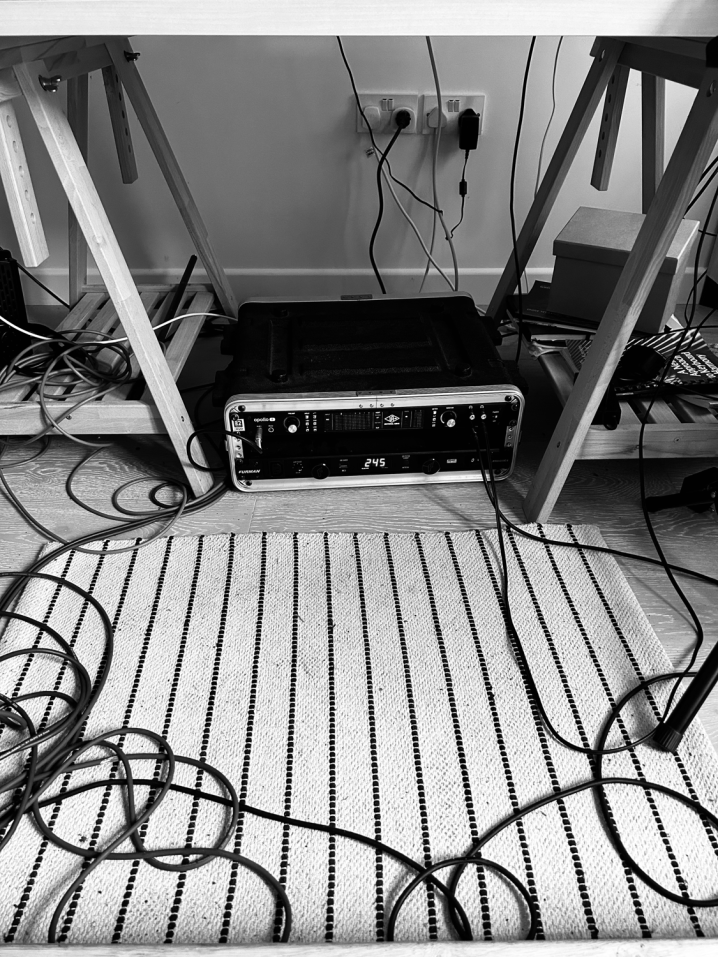
What is the most important environmental aspect of your current workspace, and what would be a particular element that you would improve on?
A lot of my recordings are made in studios, where I set up a configuration of mics and then move the performers around in the live room. In other words, I create the position of the sound by moving the player around rather than panning them in the mix. I can do this on a small scale in my own studio, but it works much more effectively in a larger room with decent acoustics and more space in which to move the players. So, for now, I need to rent these spaces, but one day, I might be able to have a suitable room of my own.
What can you tell us about your overall process of composition? How are the ideas born, where do they mature, and when do they finally see the light?
A lot of my music is created through experimentation – sometimes at the piano or sometimes by employing a process to create music in an abstract way, as with the Imprints album. I also share my work with a small group of friends at various stages of the compositional process to get feedback on a range of things – from the compositional arrangement to the recorded sound of the instruments. A piece is usually finished when I’ve run out of things to criticise about the recording. A lot of it I consider absolute music – or music for music’s sake – so there is often no narrative, and it is left up to the listener to make their own interpretation of it.
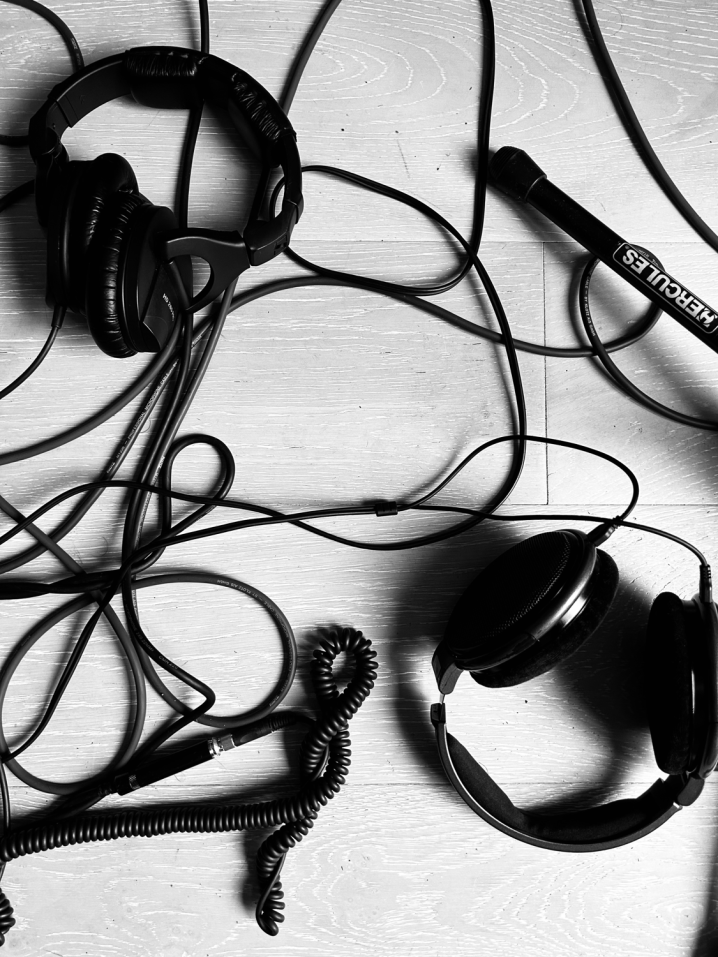
After the piece is complete, how do you audition the results? What are your reactions to hearing your music in a different context, setting, or a sound system?
Once a piece has been released, I rarely listen to the recording again, as by that time, I’ve heard it so many times that I’m happy to have a break from it. If the music is licensed for film/TV/computer games, I’m always keen to hear how it sounds in that context – though I’m happiest if the piece gets a live performance, as with my recent release “A Distant Sun”. Being involved in the rehearsals and then having the piece brought to life by live performers is something very special beyond the recording.
Do you ever procrastinate? If so, what do you usually find yourself doing during those times?
Yes, quite a lot! As it happens, I don’t have an internet connection in my studio to try and reduce that, but I use my voice memos to create sketches of pieces and I often find myself scrolling. Also, ordinary household chores seem to get done quicker if I’m putting off starting on a new recording.
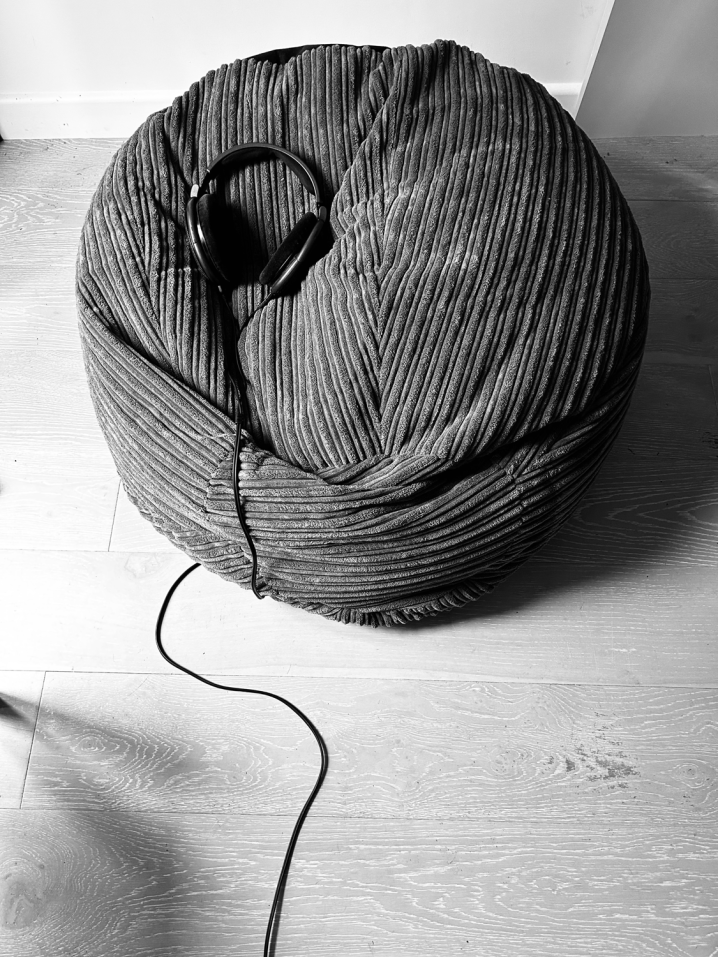
What gets you inspired?
I kind of like this Chuck Close quote. “Inspiration is for amateurs — the rest of us just show up and get to work. And the belief that things will grow out of the activity itself and that you will — through work — bump into other possibilities and kick open other doors that you would never have dreamt of if you were just sitting around looking for a great ‘art idea.’ And the belief that process, in a sense, is liberating and that you don’t have to reinvent the wheel every day. Today, you know what you’ll do, you could be doing what you were doing yesterday, and tomorrow, you are gonna do what you did today, and at least for a certain period of time, you can just work. If you hang in there, you will get somewhere.”
And finally, what are your thoughts on the state of “electronic music” today?
I’m not sure I actually have a strong opinion on that! I guess I’d only consider my music partly electronic. Certainly, it has never been easier to make recordings – all you need is a laptop or something to record on and some imagination. This is great, in my opinion, though there is so much music being made, it’s hard to have a view on it without having heard a good portion of it.
